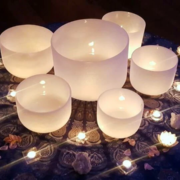UPCOMING EVENTS
Grounded Sound Bath
Saturday December 20th
6:00 pm

Connect with Mother Earth as you immerse yourself in the soothing sound of crystal and Tibetan singing bowls and other meditative instruments for a deeply relaxing & healing inward journey. Grounding mats provided.
*WE HAVE 3 SPACES LEFT*
+++++++++++++
Return of the Light:
Plant Allies for Stress, Depression, and Fatigue
with Kat Maier

Saturday January 31st, 2026, 10am – 5pm
Sunday Morning Tea Ceremonies

with Silvy Franco
Join Silvy for a meditative ceremony to commune with Camelia sinensis. Come for quiet reflection as you sip on several cups of tea following Japanese tradition. Ceremony begins at 9:30 am and goes for an hour. Pre-registration is required.
Suggested Donation: $25




Bitters
/in Herb of the Month /by Ashley Davis